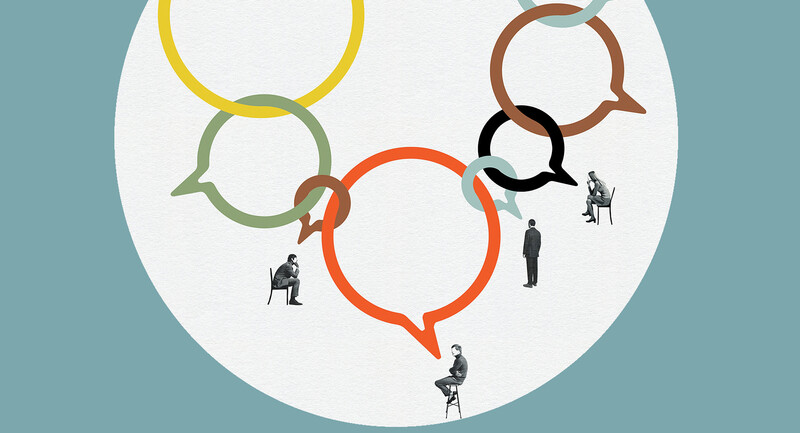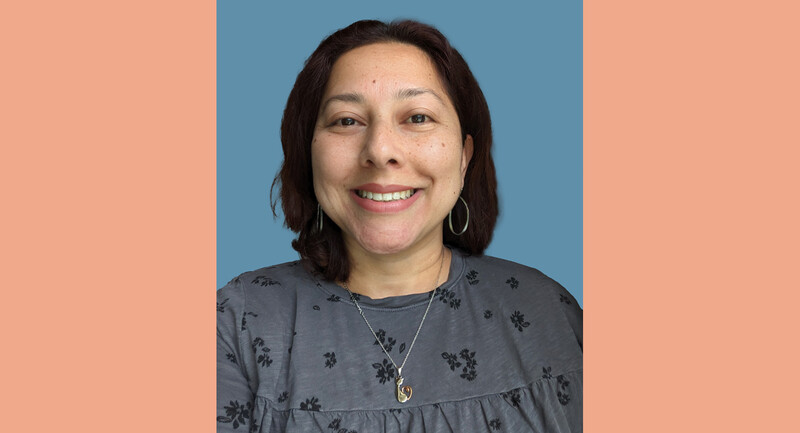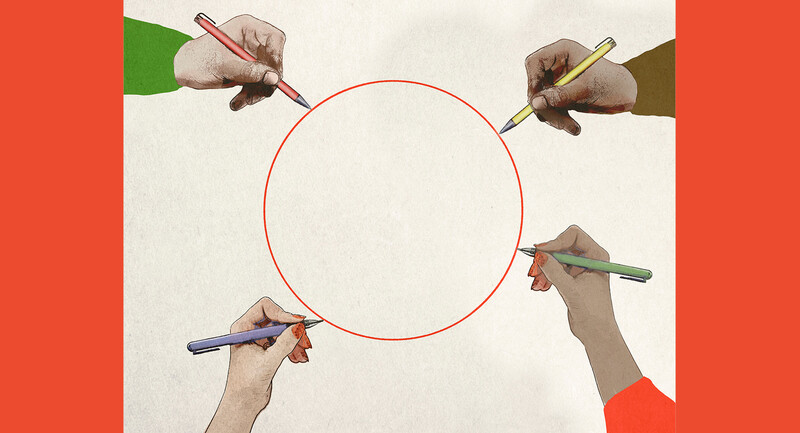As education leaders, we understand, in the very fabric of our being, that relationships are a crucially important dimension of learning and schools. We’ve seen what happens in the absence of trust, respect, and caring in learning environments. In contrast, we may have been part of communities that value strong relationships, vulnerability, and opportunities for transformational growth—and this can feel like magic. Observing such communities in action is like witnessing a humming classroom environment that appears effortlessly harmonious, but where the teacher has been working for months on end building shared procedures, routines, and community.
Circle practice is a powerful tool for creating harmonious cultures like these. Circles are part of a lineage of restorative, relational practices that originate in Indigenous communities throughout Canada, New Zealand, and the United States (Winn, 2018). They include such common elements as use of a talking piece, focused storytelling, opening and closing rituals, structured opportunities to affirm what participants have shared, and group intentions or agreements.
Having served for two decades as a teacher and school leader in urban public schools in California, North Carolina, and Massachusetts, I practiced circles in two capacities. As a teacher, I used the practice with middle school students, and as a principal, I used it with staff.
Let’s look at why, as an education leader, you should consider using circle processes. Then we’ll explore some tips to get started and what you might see as a result.
The Why: Power and Hierarchy in Schools
When I first stepped into the principalship a decade ago, I knew I wanted to help create a humming, harmonious environment for educators. I figured that if the adults in our school were part of a community built on strong relationships and trust, it would be possible for these kinds of environments to become the norm for students, too. Unfortunately, I had received minimal guidance in my leadership preparation about how to go about actually doing this, despite the importance of relationships and trust in advancing educator and student growth (Bryk & Schneider, 2002).
I also had to contend with the role that schools have historically played in maintaining social inequity and asymmetric power relationships. The ways that schools reproduce inequity have long persisted in the types of learning tasks given to students from different class backgrounds (Anyon, 1981) and the ways students are tracked in schools. This is evident in evaluation systems that privilege white, middle-class knowledge and ways of knowing (Au, 2023). And we see it in how the work of teachers (who are mostly women) has historically been controlled by their (mostly male) supervisors (Tyack & Hansot, 1982).
Approaching our work as leaders with a relational focus requires an intentional, disruptive mindset and set of actions.
These dynamics are a significant challenge to building authentic and trusting relationships. Understanding them is especially important for education leaders who have held a central role in enforcing these hierarchies at critical points in the system. Because schools reproduce hierarchy and distrust in a myriad of ways that are accepted as a natural or given part of our educational system (Apple, 1982/2012), approaching our work with a relational focus requires an intentional, disruptive mindset and set of actions (Khalifa, 2018).
Developing Trust from the Start
As the founding principal of a district middle school in Los Angeles, California, I was faced with many urgent concerns. I was thinking about how I was going to be fully staffed on the first day of school, why the plant manager seemed so irritated all the time, and where I might recruit 30 more students in the next two weeks (students in our neighborhood had multiple district and charter school options, and funds were tied to enrollment). I needed the help of other staff members to solve any problem I was faced with, and I was highly aware that with every interaction I had, I was in the process of proving exactly who I was and what I was about as a white woman working alongside a majority nonwhite educator team.
Although I was a novice principal, I had built a powerful circle practice with students over the years. With young people (and sometimes with their families), circles helped us break down hierarchy, share lived experiences, recognize our similarities and differences, and experience a collective approach to knowing and problem solving (Pranis, 2005; Winn, 2018). Although I sensed that this paradigm shift could be harder to make with adults, I was enough of a risk-taker to try it with staff.
In those crucial first days when every move mattered so much, I started professional development with an educator circle. Over time, it became an organizational routine that we naturally expected to engage in together—to start and close every school year, to mark important celebrations, to imagine new possibilities for our work together, to pause because we were burnt out. I learned to craft prompts that allowed for personal storytelling among our staff so they came to know about one another’s journey before coming to our school. Understanding the individual struggles, motivations, and opportunities that brought each of us here became essential for assuming best intentions and being patient with one another in times of conflict and tension. I learned how to use the process for building a shared story of our collective present and future (Ganz, 2011), one in which we continually named and reworked our triumphs and challenges. I came to understand that even if there wasn’t time for all of the ritual that can be part of circles—the formal opening and closing, the dedications, the witnessing round in which participants reflect back words and images that resonate from one another’s stories—if I just stuck to using a talking piece and took time to send it around the circle, I was communicating how much every voice mattered in our community.
The How
There’s a whole lot more to say about practicing circles in schools, and terrific resources are available online if you’re interested in further exploration. However, I’m also convinced that incorporating some basic elements of circles into your leadership practice right from the start—and throughout the year—can have a meaningful effect. Here are some tips to get started.
Circle Up
Traditionally, school spaces are arranged in ways that promote hierarchy and control. A person of authority (usually a teacher or principal) is typically centered at the front of the room, while participants with less power (students or staff) sit and watch, waiting for direction. The circle structure breaks down this hierarchy; it communicates a basic value of equality and suggests that everyone can serve as both student and teacher. This is humanizing and creates new possibilities for reimagining relationships.
Start by arranging chairs for a team meeting or professional development session in a circle. Put all the chairs equal distance apart, and, if possible, remove furniture that would create barriers between people.
Pass a Talking Piece
In circle practice, participants speak only when they’re holding a talking piece. You can use anything as a talking piece, and you can change it as often as you’d like; objects that hold special significance work especially well, such as a school mascot stuffed animal or a special token that a student has given you. Participants pass the talking piece around so that every member has the chance to hold it and speak, although speaking isn’t required. Even when someone chooses not to verbally share, they are encouraged to hold the talking piece for a few seconds while others hold their presence in positive regard. This ensures that everyone has an opportunity to be seen, heard, and considered. It also honors various kinds of participation.
If you’ve circled up at a team meeting or professional learning session, you might try posing a check-in question at the beginning. You could ask staff to share something they’re proud of from the week or a hope they have for professional learning work ahead. Each person answers in turn, then passes the talking piece on. Or maybe you’d like participants to benefit from hearing multiple perspectives on an issue—perhaps an important decision the school currently faces, such as how to bring staff, students, and families together to honor and celebrate student learning. As the talking piece moves around the circle, staff envision and share their ideas, building a common language and an emerging consensus about next steps. Or you might invite participants to reflect on their time together at the end of a meeting. It’s always beneficial to ask them to share a takeaway from the meeting in a word or phrase.
Although passing a talking piece may feel demanding from a time perspective, it can be a relief in other ways. It minimizes crosstalk among participants, so you don’t have to manage multiple conversations. It also takes pressure off the leader to respond after each team member shares.
Tell a Story
Circle practice is grounded in sharing and receiving oral narratives. Passing a talking piece and inviting participants to tell stories, even just a few times during the school year, is a huge investment in fostering goodwill and trust among your team.
Here are some prompts I have used:
Share a moment that captures what brought you into teaching.
Describe a time when you felt you belonged—or didn’t belong—in a community.
Share a moment from the summer when you came alive, when you felt in touch with your most authentic self.
Share a story that characterizes how you feel about our school.
Storytelling helps us see people that we have previously thought of as too different from ourselves, or that we have even held in contempt, as worthy of respect and understanding.
Dedicating time to share our stories acknowledges the inherent worth of everyone’s experience and the understanding that our lived experiences contain wisdom that is valuable to ourselves and others. Our brains receive stories in a different way than advice or commentary; they enable individuals to connect in new and unexpected ways that are at once emotional, values-driven, and humanizing (Ganz, 2011; Pranis, 2005). Storytelling helps us see people that we have previously thought of as too different from ourselves, or that we have even held in contempt, as worthy of respect and understanding (Winn, 2018). Sharing our experiences with others is an act of trust—and group intentions or agreements can support the process. Across the communities where I’ve practiced circles, group intentions have remained consistent and simple: Speak from the heart, listen from the heart, be spontaneous, be of lean expression.
Be Vulnerable
Circle processes offer powerful tools to build relationships, but the way in which we, as education leaders, participate in this practice has perhaps the biggest effect of all. As the person who holds the most authority, you must share power in these moments for participants to engage authentically. Don’t expect this to be comfortable at the start. You may feel uneasy with the circle arrangement for quite some time. You may find yourself resisting the urge to respond after team members share. Your heart rate will speed up if you choose to share a meaningful but unpolished story, rather than one you’ve rehearsed in your office the day before. As you practice speaking and listening from the heart and being spontaneous, your own unpredictable stories will come up; these stories often feature unresolved issues and themes, and you may experience unexpected emotions as you share them. To give yourself some mental space to lean into this, you can have other staff members facilitate sometimes, which will enable you to sit among your team as a participant.
Although these practices become easier over time, they do take courage. The silver lining is that they allow you to not have all the answers, to be human, and to model leadership that finds strength in vulnerability.
Why It’s Worth It
Over my six years as a leader at our school, the sustained practice of circles as part of structured professional development helped our team not only break down hierarchy, but also foster care and deep trust in our community. In a staff of 30, we retained all but three team members during this time. When later asked about her circle experiences at our school, one veteran teacher said, “Because we did have a culture of respecting people’s voices and prioritizing listening, it just allowed me to feel like it’s actually going to be OK for me to be myself here.” When we, as leaders, help create conditions where adults feel as though they can bring their authentic, full selves into their professional life, relationships flourish—and become the foundation from which teachers, students, and families thrive in school.
The years I served as a principal were some of the most rewarding of my professional career, in large part because I viewed leadership as a collective endeavor and success as a web of strong relationships. As an education leader, you have almost singular power to engage your community, centering ways of being together that are meaningful and healing and that bring all of us closer to the best version of ourselves.
Take the risk. Do it from the start when folks are most open to trying something new. You will feel renewed and powerful in the best sense, and those feelings will be contagious.
Reflect & Discuss
➛ In what ways does your school reproduce hierarchy? In other words, what role does your school play in maintaining social inequity and asymmetric power relationships?
➛ What does equity look like in a circle?
➛ What are the benefits you would most like to see among your staff as a result of implementing circle practices?
➛ The author views leadership as a "collective endeavor." Do you hold the same view? If so, how do you see circles making your leadership more "collective"?









